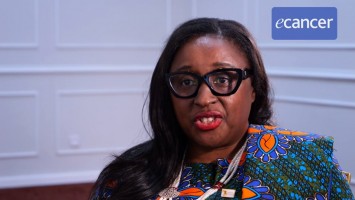SIOG 2015
Optimising treatment in elderly patients with cancer
Dr Tomáš Büchler - Charles University First Faculty of Medicine, Prague, Czech Republic
You have been welcoming everybody here to the meeting in Prague, what’s special about this particular meeting, would you say?
I’ve had the honour to be invited here on behalf of the Czech Society of Oncology to welcome the delegates. Obviously the question of elderly patients with cancer is important for us because, as in every other country, the population is aging and probably more than half of our patients could be classified as elderly. So therefore there is a strong need to meet on the interdisciplinary platforms such as this.
Do you think there’s an unmet need, then, that’s not being properly addressed by the normal procedures?
I was showing some slides at this conference showing quite clearly that the outcomes of cancer in terms of cancer specific mortality are inferior in the elderly population in comparison to the general population. That’s why I think that there is an importance in looking at this population and maybe specialising and meeting the needs of this population although the jury is still out on the question whether age-specific cancer guidelines can do this or not.
Can I get you to talk about a specific because I know you are very interested in breast cancer in older patients – why do you think there’s a need for more optimal approaches to this?
At our department we have a line of research looking at the treatment of elderly breast cancer patients who have locally advanced breast cancer but do not have any distant metastases. The findings that we have, and this is still at a very preliminary stage, is that actually when you look at the population of very elderly, that is at the age of 80 , patients they might not benefit from local regional therapy as much as the younger patients. This might be quite novel because it would point to the need of individualisation of therapy for this age group.
What are the data that you have on the effectiveness of upping the local regional therapy to get a better long-term result?
We certainly have that data for the general population and even for women up to the age of 80 but if we look at the population above 80 we actually do not see any improvement in survival with local regional therapy which is certainly a striking difference from current guidelines for the general population and for breast cancer therapy.
As a rule for now, then, obviously more research needs to be done but what advice would you give clinicians when assessing things like frailty and looking at the difference between biological age and chronological age. How do you advise doctors to proceed when they have an older patient with breast cancer?
The question is actually quite difficult to address in the clinic and the reason is that we have very poor indicators to determine the biological age of the patient. This is one of the most difficult things in oncology in current everyday medical oncology practice.
So how do you do it usually?
I basically rely on my instincts. Of course we do have some guidelines to assess frailty.
Instincts and which particular data do you inject into those instincts?
We do have criteria for frailty, I certainly do employ them. At our department we do not routinely do geriatric assessments to all our patients who might deserve it but this is certainly something to look at and to maybe improve our clinical practice and maybe to provide some more comprehensive assessment including social and other issues for this particular very vulnerable population.
What sort of age-specific guidelines do you think might emerge from all of this?
The thing is the definitions of elderly or geriatric patients are different in the US, according to NCCN, they’re different in Europe, according to ESMO. Definitely the communication in the world and the field might be helped by developing a common set of criteria to define an elderly population. Then, of course, we, as I said, need criteria to define biological age and that’s very difficult indeed.
So in principle you could tick a whole lot of boxes and come up with the answer.
In principle yes but sometimes this doesn’t work so still in the clinic you very much have to rely on the instinct of what you see. You might get sometimes patients who actually tick all the boxes but still you decide to provide them one form of treatment or another based on your clinical feeling.
So, in a few words, could you sum up what are the big clinical messages coming out of this for cancer doctors?
There is a strong need for collaboration to develop clear criteria for different diagnoses based on age. There is also a need to validate age-based cancer guidelines because we do not really know at the moment whether the outcomes in the elderly population will be better using those guidelines as opposed to guidelines for the general population. This is indeed very difficult from the situation we have in teenage cancers where there has been clearly shown that these need to be treated differently from, let’s say, adults. So there is still work to be done and I hope the SIOG congress will contribute to this work.








